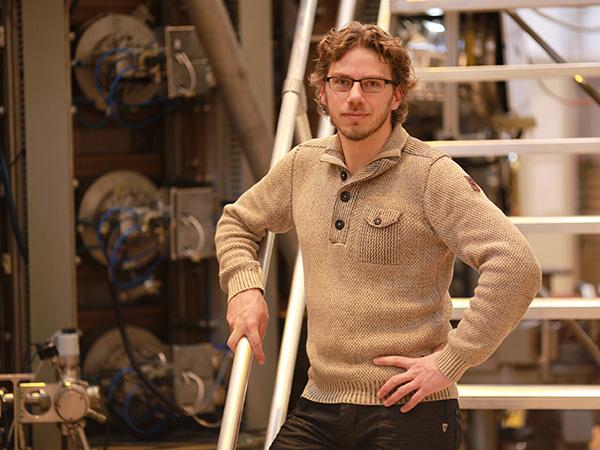
Dr. Wouter Vijvers, FOM-Institute DIFFER
Wouter Vijvers
FOM-Institute DIFFER
Monday, November 23, 2015
2:30pm
ABSTRACT
Current extrapolations of conventional single-null divertor tokamaks to the power plant scale (i.e. ITER-like DEMO designs) lead to the requirement of operating at a core radiation fraction close to 100%. This poses challenges to the machine performance. Several alternative magnetic geometries of the divertor have been proposed in recent years to help mitigate the risks associated with high radiation fractions. The aim of all alternative divertor configurations is to increase the volumetric energy losses in the scrape-off layer (SOL) and divertor, and to increase the plasma-wetted area to reduce the peak heat flux to the divertor wall. This seminar provides an overview of recent research results on alternative divertors, obtained on the TCV tokamak in Lausanne, Switzerland.
BIO
Dr. Wouter Vijvers (pronounced: fei-verse) studied theoretical physics at the University of Amsterdam. After a year of working in industry, he commenced a PhD project in experimental plasma physics at the FOM Institute for Plasma Physics “Rijnhuizen” in 2006. During his PhD, he developed the plasma source for the linear plasma generator Magnum-PSI. This work consisted of the formulation of scaling laws for a high-flux, low-temperature cascaded arc hydrogen plasma source on the basis of experiments and theoretical models. Upon completion of his PhD, he started working as a postdoc at the CRPP-EPFL in Lausanne (Switzerland) in 2010 within the scope of a European training program on tokamak operations. In this role, he became an expert operator of the TCV tokamak and obtained a session leader license for JET. In addition, he started a research project on the Snowflake divertor, notably studying the transition between the single-null and snowflake-plus configurations, which provided insight into the importance of cross-field transport during ELMs. In 2014, he worked for 6 months at the York Plasma Institute as a postdoc under the supervision of Bruce Lipschultz, studying the exhaust properties of the X-divertor, before receiving the Dutch Veni grant for €250.000. Consequently, he is now back at FOM DIFFER (formerly Rijnhuizen) as a postdoc. The main objective of his grant project is to develop a multi-spectral imaging diagnostic (MANTIS) to determine key plasma parameters throughout the divertor at high spatial and temporal resolution, and use this to better understand the physics of advanced divertors.